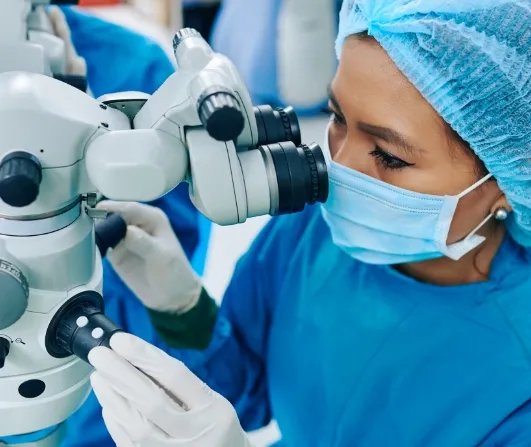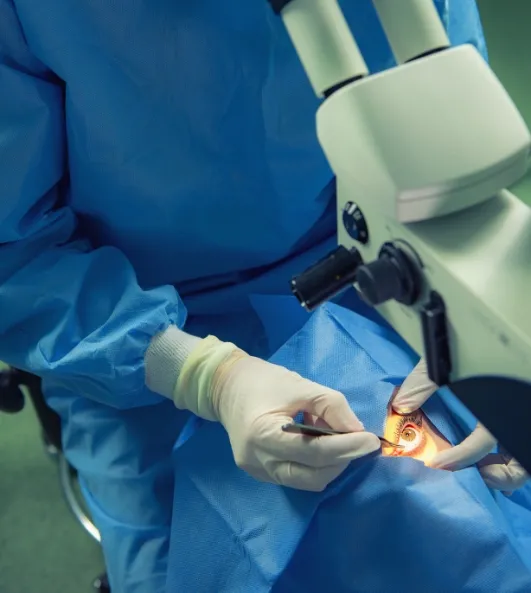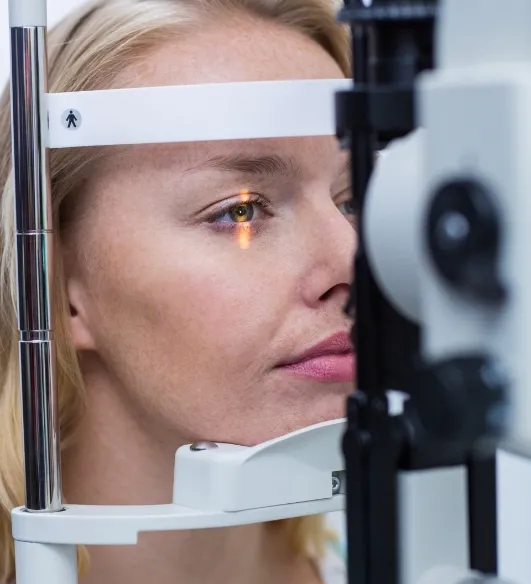Laser
Our clinic's ophthalmologists can assist with both YAG laser capsulotomy and YAG peripheral iridotomy. These procedures help with posterior capsule opacity and narrow-angle glaucoma, respectively. If you are wondering if these laser procedures are the right treatment choice for you, please contact our office.
YAG Laser Capsulotomy

Approximately 20% of cataract patients will develop haze on the membrane behind the intraocular lens implant following cataract surgery, which results in diminished vision. The vision may be blurred, hazy, or associated with significant glare and visual acuity loss. This condition is known as posterior capsule opacity or may be called a "secondary cataract."
In YAG laser capsulotomy, a laser is used to create an opening in the hazy capsule situated behind the intraocular lens implant to allow you to see more clearly.
Just like with other procedures, there is risk associated with laser treatment. Potentially there might be inflammation, retinal detachment, lens dislocation, and increased eye pressure. Each of these problems is potentially serious, but they are each very uncommon. Very rarely, the procedure may need to be repeated.
Pre-operative Instructions:
- Before your laser treatment, your eyes will be dilated by a technician. The procedure only takes a few minutes and is entirely painless.
- Nothing will touch your eye; however, you must remain still during the procedure.
Post-operative Instructions:
- Following a YAG laser capsulotomy, you may resume normal activities immediately.
- You may experience some floaters afterward. These will likely resolve themselves within a few weeks.
- Most people can expect their vision to improve within a day.
If you are having both eyes done on the same day, you will need a driver to take you home afterwards.

YAG Peripheral Iridotomy Laser
Laser peripheral iridotomy is a treatment for narrow-angle glaucoma. The surgeon uses a YAG laser to create a small hole in the peripheral iris. This improves the circulation of fluid inside the eye and widens the anterior chamber angle.

Pre-operative Instructions:
Before your last treatment, a technician will put some eye drops in your eyes that will constrict your pupils. The laser procedure takes only a few minutes and is entirely painless. Nothing will touch your eye; however, you must remain still during the procedure.
Post-operative Instructions:
Following a YAG laser peripheral iridotomy, you may resume normal activities immediately. You may experience some redness and irritation following the procedure. The doctor will prescribe you some anti-inflammatory eye drops to use for about one week.
Generally, the YAG laser peripheral iridotomy is a very low-risk procedure. The most common adverse reaction is a temporary rise in intraocular pressures. The technicians will check your pressures before and after the procedure. The rarest complication is vision loss. Around 25% of patients will notice a slight change in their vision, which usually stabilizes after about one month.